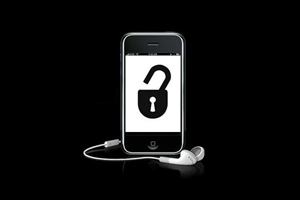Who Will Crack The Code On Mobile Events?
 The mobile events startup ecosystem is littered with failures, yet everybody is keenly aware of the problem: it’s still way too challenging to get people together. Why aren’t people flocking to the various solutions that are out there? We ran into a ton of challenges with Holler but we still believe there’s an opportunity to fill the gap. Here’s a breakdown of the greatest challenges facing mobile events apps.
The mobile events startup ecosystem is littered with failures, yet everybody is keenly aware of the problem: it’s still way too challenging to get people together. Why aren’t people flocking to the various solutions that are out there? We ran into a ton of challenges with Holler but we still believe there’s an opportunity to fill the gap. Here’s a breakdown of the greatest challenges facing mobile events apps.
People Want Personal Invites
If an alert pops up on your phone that says “Nick is going to grab coffee”, the first thing you’d probably think is “That’s great, but am I invited?” As I wrote on my personal blog recently, we were able to quadruple response rates by making invites personal. We’d send out a message such as “Hey Nick, I’m headed to grab coffee. Interested in joining?” There was another problem that took place despite the massive increase in conversions though.
People Aren’t Always Available!
Our response rates were through the roof (upwards of 85 percent) but the bigger problem was that many people simply weren’t available. For those that wanted to go hang out with a close friend, they were used to sending an SMS message. If a group of friends regularly got together they could just use a group texting app. These two services: 1-to-1 SMS and group SMS have solved most of the problem for friends who want to get together with each other. So if close friends are already in contact with each other, where does that leave things?
Strangers Are The Way!
People who know each other have already figured out efficient ways of organizing activities with one another. That leaves us with strangers. When we were building Holler we actually split our optimization between friends and strangers and the further we got, the more that realized how important interaction among strangers would be. The key with building an app that connects strangers is to make them feel less like strangers. That’s the exact formula that Highlight is using with their new app: expose people to others with mutual friends and shared interests.
It’s an interesting take although we’ve yet to see how big it will get. Building relationships among people who are nearby and making them feel connected to each other is the key to success in this space. So far the vast majority of apps targeting the mobile events space have been focused strictly on “events”. Highlight has proved that making things more passive is the way to go. I know because I’ve already had multiple interactions on the app, almost the same number I had on Holler in far less time.
People Don’t Want To Promote That They’re Alone
You may think that passive isn’t the way to go, but let’s look at things another way. If you were to build an app that let people broadcast out that they want to do something (e.g. “Who wants to go grab coffee?”) it puts the leaders in an awkward position. The people who are trying to drive social interactions are promoting publicly that they are currently alone. Being alone is not cool. In our minds, cool people always have something going on (even though we know they don’t).
That’s why passive interactions need to be encouraged. If you see that someone is always nearby you, it may encourage you to reach out. A conversation may start, you may learn about that person, and perhaps an in-person interaction will take place.
For Those Who Are Daring
Let’s be honest: casual meetups with strangers sounds a hell of a lot like a dating solution. Yet there are plenty of people who are willing to spontaneously meet up with others who have similar interests and mutual friends. The greatest question will be how apps like Highlight (e.g. Glancee, etc) will provide offerings for those who want to actually meet up. Will they present nearby deals for people to connect with each other?
This seems like a natural evolution of such products. Perhaps there is another approach that we haven’t even thought of yet. Whatever the case is, it’s clear that someone is going to crack the mobile events code, the big question is who? What do you think the secret sauce is to success in the mobile events space?
